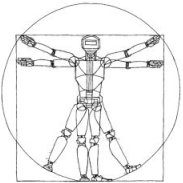Robotics: Science and Systems XII
A Probabilistic Framework for Real-time 3D Segmentation using Spatial, Temporal, and Semantic Cues
David Held, Devin Guillory, Brice Rebsamen, Sebastian Thrun, Silvio SavareseAbstract:
In order to track dynamic objects in a robotâs environment, one must first segment the scene into a collection of separate objects. Most real-time robotic vision systems today rely on simple spatial relations to segment the scene into separate objects. However, such methods fail under a variety of real- world situations such as occlusions or crowds of closely-packed objects. We propose a probabilistic 3D segmentation method that combines spatial, temporal, and semantic information to make better-informed decisions about how to segment a scene. We begin with a coarse initial segmentation. We then compute the probability that a given segment should be split into multiple segments or that multiple segments should be merged into a single segment, using spatial, semantic, and temporal cues. Our probabilistic segmentation framework enables us to significantly reduce both undersegmentations and oversegmentations on the KITTI dataset [3, 4, 5] while still running in real-time. By combining spatial, temporal, and semantic information, we are able to create a more robust 3D segmentation system that leads to better overall perception in crowded dynamic environments.
Bibtex:
@INPROCEEDINGS{Held-RSS-16,
AUTHOR = {David Held AND Devin Guillory AND Brice Rebsamen AND Sebastian Thrun AND Silvio Savarese},
TITLE = {A Probabilistic Framework for Real-time 3D Segmentation using Spatial, Temporal, and Semantic Cues},
BOOKTITLE = {Proceedings of Robotics: Science and Systems},
YEAR = {2016},
ADDRESS = {AnnArbor, Michigan},
MONTH = {June},
DOI = {10.15607/RSS.2016.XII.024}
}
